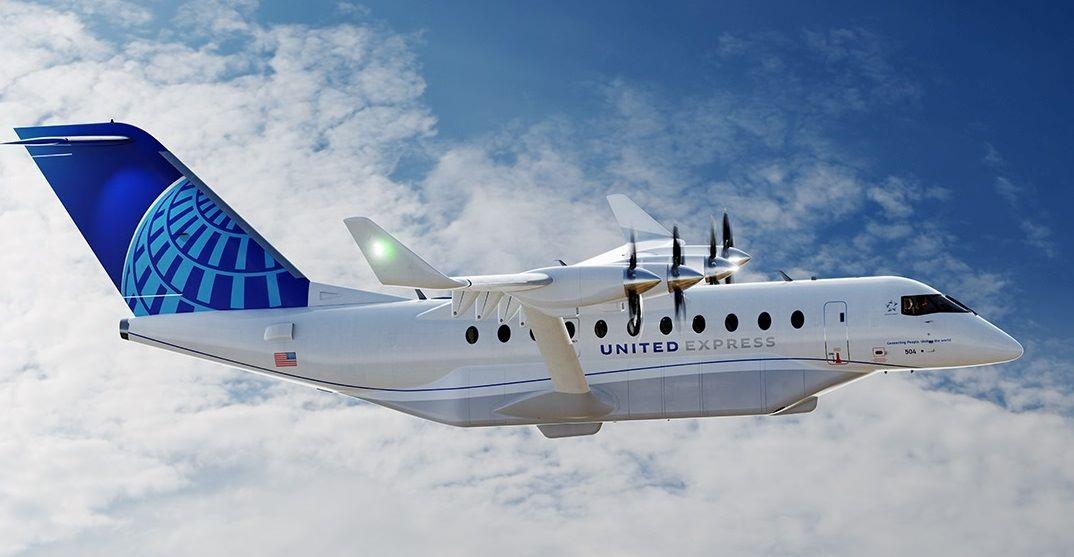
United Airlines has provided a glimpse of how it expects its sustainability plays to change the carrier’s fleet makeup by 2030, with its first electric-powered aircraft planned to be in service by then.
United and its regional affiliate Mesa Air Group have invested in Swedish startup Heart Aerospace and placed conditional orders for 200 ES-30 30-seat electric regional aircraft, plus an option of another 100. Deliveries are planned to begin in 2028.
United and Mesa have also invested in U.S. electric vertical-takeoff-and-landing (eVTOL) startup Archer Aviation and placed conditional orders for 200 piloted four-passenger Midnight air taxis, plus an option for 100, for entry into service in 2025.
By 2030, United expects to have electric fixed-wing aircraft flying regional routes, “probably [Chicago] O’Hare and Denver being key markets for that initial batch of electric aircraft,” Mike Leskinen, president of investment arm United Airlines Ventures told a CNBC virtual event on Oct. 6.
By 2030, United also expects to have “100 or so eVTOL aircraft flying routes in our most congested cities. Think about San Francisco and New York, flying our customers from city center to the airport. So the trip to the airport will be decarbonized,” Leskinen said.
Heart unveiled the larger ES-30 in September, replacing its originally planned 19-seat ES-19. The aircraft will have an initial range of 200 km (125 mi.) on battery power. Reserve requirements will be met using a hybrid-electric system burning sustainable aviation fuel (SAF). This can be used to extend range to 400 km.
“In the U.S., you will see [the ES-30] on short hops, say in Colorado when you’re flying to Aspen from Denver. So probably around 100 airplanes [in the U.S.] by 2030,” Heart founder and CEO Anders Forslund told the CNBC event.
The ES-30’s range is expected to increase as batteries are replaced every two years and upgraded with new technology. “That’s key to United’s involvement,” Leskinen said. “Because initially the aircraft are going to fly routes that are 200 miles or less, but as [battery] energy density increases, that aircraft is going to have a range of 250 miles, 300 miles, which is going to give us a lot more utility connecting our hubs.”
Leskinen expects electric 30-50-seat aircraft will have lower operating costs than conventional regional aircraft. “What that means is that a small city is going to get either a service that they didn’t have before ... or greater frequency of service that’s going to allow the business customer from that small town to maybe do a trip in and out in the same day,” he said.
As for eVTOLs, Leskinen cites ensuring regulators and the public are comfortable with air taxis flying over urban areas as the biggest challenge ahead. “Adoption, air traffic control, how you integrate that in congested airspace, how you land the aircraft at the airport, how and where you build infrastructure ... to make sure it’s convenient to offices where you have business executives,” he explained. “All of that’s going to take lot of planning, lots of capital. So, that’s why we as United Airlines were there early to get those processes started.”
For United, the electrification of short-haul flights is part of a portfolio approach to sustainability that includes investing heavily in sustainable aviation fuel (SAF) for its medium- and long-haul flights. Pointing out that United accounts for 40% of the public commitments for SAF supply, Leskinen said he expected 10% of longer-haul flights to be powered by SAF by 2030.
He welcomed the recently enacted U.S. Inflation Reduction Act and not just its SAF blender’s tax credit, but also its support for green hydrogen production and point-source capture of CO2, “where it makes projects that would not have been profitable now very profitable,” Leskinen said.
“We have a portfolio pipeline of sustainable aviation projects at United that’s 177 companies deep, and we were pencils down on a number of those because, without this legislation, the hurdles were just too far to develop that technology,” Leskinen said. “There are literally dozens of companies that wouldn’t have worked that now are viable startups that you’ll hear about United Airlines and United Airlines Ventures investing in the coming months and years.”

